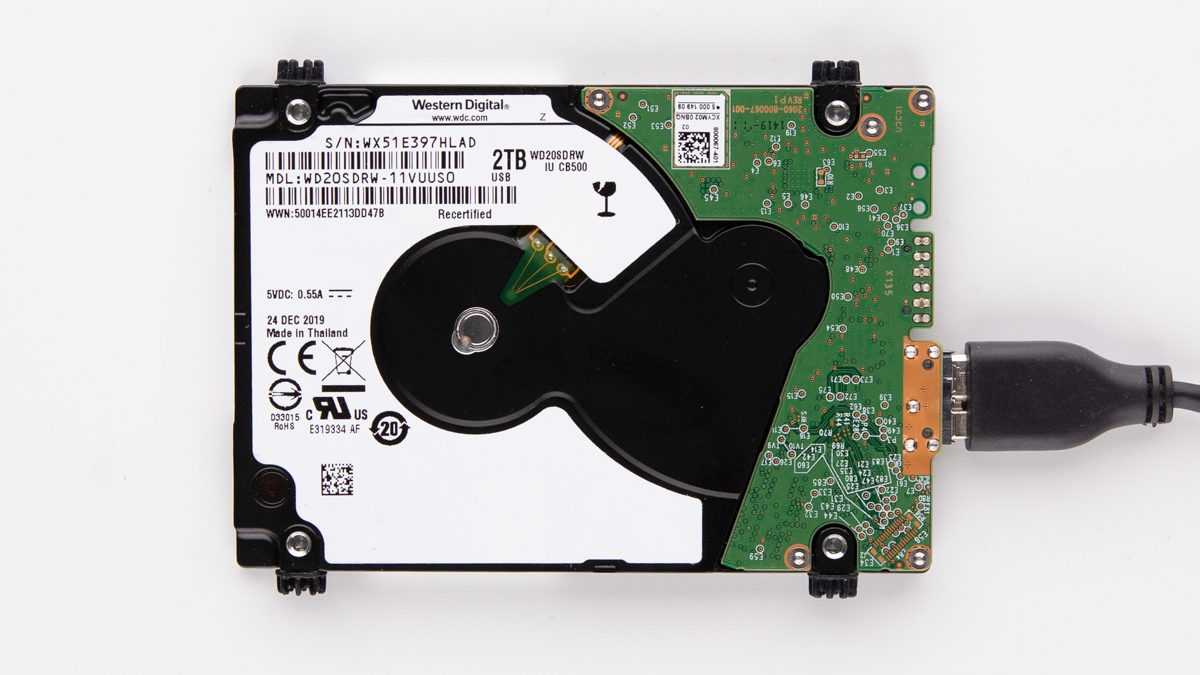Case Study | Data Recovery Process for Western Digital Charger HDD
Data Recovery Process for Western Digital Charger HDDs
If you own a portable WD Elements or WD Passports 2TB hard drive, it's important to note that these drives belong to the "Charger" family of HDDs. These devices offer ample storage space, fast data transfer rates, and compatibility with various operating systems. They also come with a durable design, a USB 3.0 cable, and a three-year warranty. However, like any other HDD, these drives can potentially fail or malfunction, which may cause you to worry about losing your important data. Fortunately, there are professional data recovery companies that can help you recover data from a damaged or corrupted HDD.
WD Charger HDD family members :
- WD20SMZW-11JW8S0
- WD20SMZW-11JW8S1
- WD20SMZW-11YFCS0
- WD20SMZW-34JW8S0
- WD20SMZW-34JW8S1
- WD20SMZW-59JW8S1
- WD20SMZW-59YFCS0
- WD20SMZW-59YFCS1
- WD20SMRW-59YNDS0
- WD20SDZW-11Z3CS0
- WD20SDRW-11VUUS0
- WD20SDRW-34VUUS0
- WD20SPZX-08UA7T0
- WD20SPZX-11CRAT0
- WD20SPZX-22CRAT0
- WD20SPZX-21UA7T0
- WD20SPZX-75UA7T1
- WD20SDZM-59TM5S1
- WD20SMZM-59H3FS1
The "Charger" HDD family has certain limitations that prevent them from being recoverable using DIY or consumer-grade data recovery software. All of these drives have a forced MCU-encrypted firmware area, making it impossible to recover data from these drives using PCBs from spare (donor) drives.
In the context of a hard disk drive (HDD), the term MCU stands for Micro Controller Unit. It is the largest chip on the Printed Circuit Board (PCB) of an HDD and is responsible for performing all calculations and controlling the Read/Write channel. The Read/Write channel is a specialized unit that converts analog signals from the heads into digital information during the reading process and encodes digital information into analog signals when the drive needs to write. Additionally, the MCU is equipped with IO ports to manage all components on the PCB and transmit data through the SATA or USB interface.
The two most common types of damage to portable HDDs are bent or broken USB ports and physical sector damage. Sectors are the smallest units of data storage on an HDD. When a sector is damaged, it becomes unreadable or unwriteable, resulting in data loss or corruption. Physical damage to sectors can be caused by various factors, such as mechanical shock, excessive heat, power surges, or manufacturing defects.
In the event of a physically damaged PCB, an MCU adaptation is performed on a spare (donor) PCB. Adapting the MCU involves removing several very small Surface-Mount Device (SMD) components from the original PCB and transferring them to a matching PCB. The ease of performing this adaptation varies depending on the different Ball Grid Array (BGA) packages used in different models.
When sectors are damaged inside the HDD system's firmware area, data recovery procedures become a significant challenge. Let's explore how this process works in a real-world case.
Recently, our team encountered an intriguing case involving a 2TB My Passport drive. Upon opening the drive enclosure, we discovered the WD20SDRW-11VUUS0 drive inside. While the drive wasn't clicking, it also refused to mount in the operating system. Upon closer examination, we found that a critical module containing the list of all service area modules and their addresses had been destroyed. This left the drive in a state of confusion, as it had lost track of the locations of all the firmware modules on the media. Our data recovery engineers embarked on a mission to salvage the user's invaluable data:

- Service Area Tracks Copy: Our first step in this data recovery journey was to unlock the drive's Printed Circuit Board (PCB) and meticulously examine the service area. We knew that to retrieve the lost data, we had to start by copying all the service area tracks. This painstaking process involved preserving every last detail of the service area.
- Rebuilding the Critical Catalog Module: With the service area tracks in our possession, our next challenge was to rebuild the crucial catalog module. This module contained all the vital offsets to service area elements, serving as the key to restoring the drive's functionality. Our team developed a specialized program to piece this puzzle back together.
- Unforeseen Complications: During the firmware backup process, we encountered an additional setback. The second-level Shingled Magnetic Recording (SMR) translator had critical bad sectors in both copies. This posed a grave threat to the user's data, as access to their information remained impossible without this piece of the service area. However, our seasoned specialists refused to be deterred and utilized our unique method to repair this critical component.
- Relocating Service Area Elements: Once all the service area elements had been painstakingly repaired, we decided to take an extra precautionary step. We moved these crucial components from their original allocation area to a new location with better media conditions. This decision was made to ensure the long-term stability and reliability of the recovered data.
- A Successful Recovery: After overcoming these significant hurdles, the drive was finally ready to reveal its secrets. We initiated the process of reading the user's data, making sure to account for a few bad sectors in the process. The result? A successful data recovery, bringing relief to the user and reaffirming our commitment to excellence in the field of data recovery.
The case of the of the “Charger” 2TB drive with severe service area damage showcased the expertise and dedication of the ACE data recovery team. In the face of adversity, we leveraged our technical prowess and unique methods to recover the user's invaluable data. At ACE Data Recovery, we stand ready to tackle even the most challenging data recovery scenarios, providing hope and solutions to clients in their times of need.
